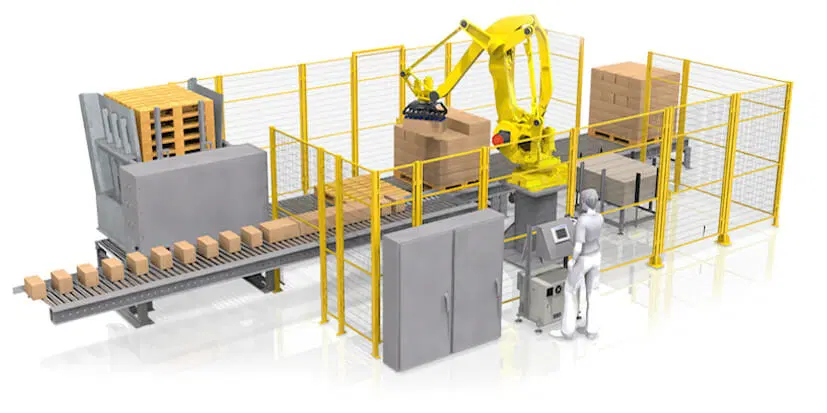Introduction – Cloud Computing: The Backbone of AI
Cloud computing is the backbone of artificial intelligence (AI) technologies. By leveraging the cloud, organizations gain access to scalable resources, storage, and computational power. This enables them to build, deploy, and manage AI models efficiently. Cloud computing infrastructure has the potential to become the defining force in the further development of AI technologies. For decision makers and leaders, especially chief information officers (CIOs), understanding this synergy is crucial for driving innovation and maintaining a competitive edge.
A Brief Historical Overview of AI and Cloud
Cloud Computing
Cloud computing began to take shape in the early 2000s, revolutionizing the way businesses handled IT infrastructure. Instead of maintaining on-premises servers and hardware, companies could now rent computing resources from cloud service providers. This shift allowed for flexibility, cost savings, and global accessibility. Artificial Intelligence AI, on the other hand, has a longer history. Its roots trace back to the mid-20th century when researchers began exploring machine learning and neural networks. Early AI research focused on symbolic reasoning and expert systems, but it was not until recent years that AI experienced exponential growth. This surge was driven by advancements in deep learning, big data, and cloud computing. The availability of massive datasets and powerful cloud-based computational resources has enabled AI to achieve breakthroughs in areas like natural language processing, computer vision, and autonomous systems.
Enhancing Data Sciences and Analytics
Leveraging the Cloud for Data Science
Cloud platforms provide an ideal environment for data scientists and analysts. They can access vast amounts of data, perform complex computations, and collaborate seamlessly. Whether it is training machine learning models, running statistical analyses, or visualizing results, the cloud streamlines these tasks. This means data scientists can focus more on deriving insights and less on managing infrastructure.
A practical example is the use of cloud-based AI in healthcare. Hospitals and research institutions use cloud platforms to analyse patient data, predict disease outbreaks, and personalize treatment plans. The cloud’s ability to handle large datasets and perform real-time analysis is crucial in these scenarios.
Automation and Efficiency
Boosting Efficiency Through Automation
AI thrives on automation – automation of repetitive tasks can enable organisations to free up valuable human resources. Cloud-based AI services allow for automated data preprocessing, model training, and deployment. As a result, data scientists can focus on higher-level tasks, such as feature engineering and model selection. For example, automated machine learning (AutoML) tools can automatically select the best algorithms and tune hyperparameters, significantly reducing the time and effort required to develop high-performing models.
Consider the example of customer service. Many companies use cloud-based AI chatbots to handle routine inquiries, freeing up human agents to tackle more complex issues. Over and above improving efficiency these solutions also enhance customer satisfaction.
Strengthening Cybersecurity
AI-Driven Security Solutions
Cloud providers integrate AI into their security offerings. And most of these Machine learning algorithms integrated into the AI solutions analyse network traffic, detect anomalies, and identify potential threats. Additionally, AI-powered authentication mechanisms enhance user security by recognizing behavioural patterns and flagging suspicious activity. For CIOs, leveraging these AI-driven security solutions means staying ahead of cyber threats and ensuring robust protection for their organization’s data and systems. A notable example is the use of AI in fraud detection. Financial institutions use cloud-based AI systems to monitor transactions in real-time, identifying and flagging suspicious activities. This proactive approach helps prevent fraud and protect customer assets.
Platform as a Service (PaaS) and AI
Empowering AI Practitioners
PaaS solutions, fuelled by AI and data science services, empower AI practitioners. These platforms provide pre-built tools, APIs (Application Programming Interfaces), and frameworks for developing and deploying AI applications. Whether it is natural language processing, computer vision, or recommendation systems, Platform as a Service (PaaS) simplifies the development process. Democratization of AI technology allows even smaller organizations to leverage advanced AI capabilities without needing extensive in-house expertise.
For instance, a retail company can use PaaS to develop a recommendation system that suggests products to customers based on their browsing history and purchase patterns. This form of personalized shopping experience can enhance customer loyalty.
Conclusion: AI on Cloud9!
In conclusion, cloud computing is not just a support system for AI; it is the very foundation that enables AI to thrive. For chief information officers, leveraging cloud computing means unlocking the full potential of AI, driving innovation, and maintaining a competitive edge in the digital landscape. Embrace the cloud and watch your AI initiatives soar to new heights! By integrating cloud and AI strategies, CIOs can ensure their organizations are well-positioned to capitalize on the transformative potential of these technologies.
The synergy between cloud computing and AI is a game-changer. As we move forward, the cloud will continue to play a pivotal role in the evolution of AI, driving advancements that were once thought impossible. For CIOs, the message is clear: embrace the cloud, harness the power of AI, and lead your organization into a future of limitless possibilities.
***************************************************************************************









